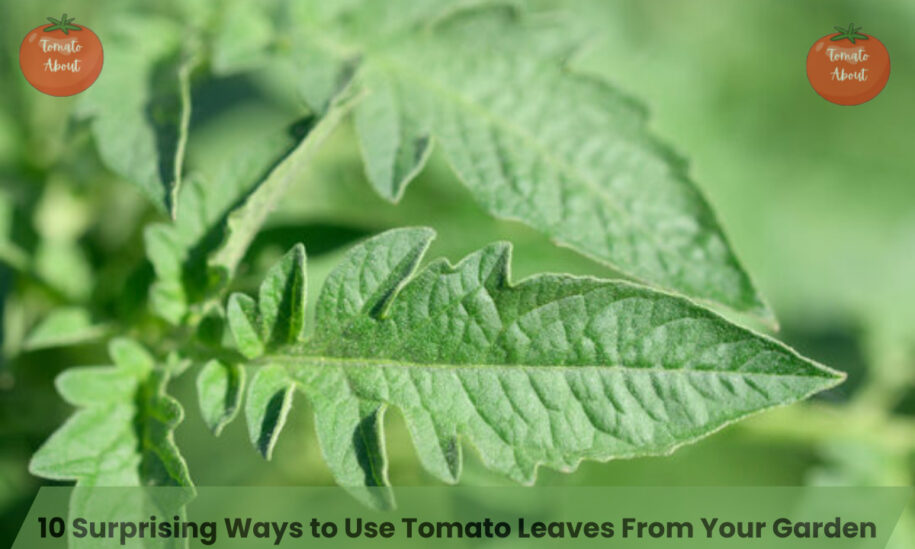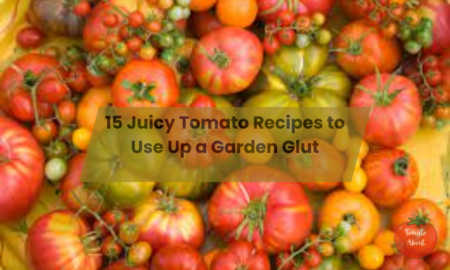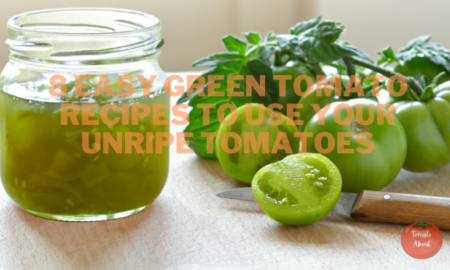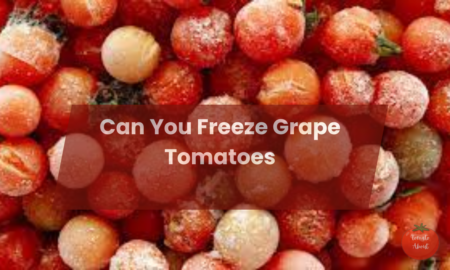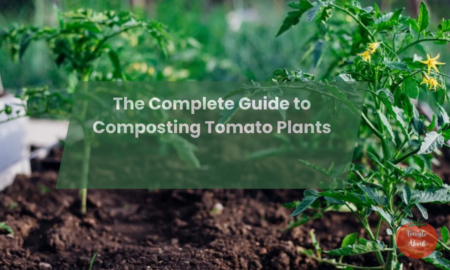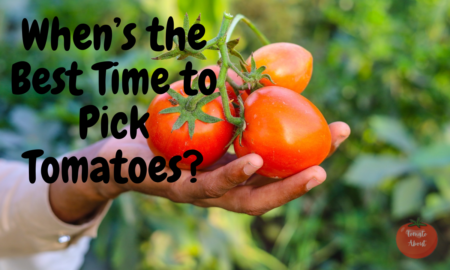Another season of tomato harvesting is upon us, gifting passionate home gardeners like us bumper crops of juicy red fruits to enjoy. Yet in the process of tending our vines, most of us end up discarding far more green foliage than ripe produce. But what if those discarded leaves offered untapped potential?
As an avid tomato grower myself, I often wondered if I could make use of all those severed leaves rather than relegating them to the compost. With some experimentation, I’ve discovered tomato leaves can do much more than many gardeners realize – from pest control to kitchen creations and beyond.
While intriguing, it’s important we start with an honest discussion about safety. Let’s address concerns before jumping into the fun stuff.
Should We Worry About Toxins in Tomato Leaves?
It’s true tomato plants contain glycoalkaloids, primarily tomatine, and solanine. In large consumed quantities, these compounds trigger negative effects in humans. Understandably that fuels questions about ingesting tomato leaves.
Here’s the thing – most people don’t eat enough leaves to cause issues. We easily consume related nightshades like potatoes and eggplants containing the same alkaloids. Even green tomatoes feature in recipes without raising red flags.
Still, individuals react differently. If you’ve had gastrointestinal troubles from unripe tomatoes, apply caution with their foliage. For everyone else, leaves offer intriguing possibilities when used sensibly. With a few precautions, we unlock nature’s gift of free garden materials brimming with potential.
1. Compost Them for Plant Nutrition
An obvious first use for any garden scraps is composting to feed future crops. Chopped tomato vines provide an excellent source of nitrogen and trace nutrients to nourish soil health. I shred all debris from spent plants to mix into compost bins at season’s end.
One word of warning – never compost obviously diseased plant material or you risk perpetuating problems. As tomato foliage is highly susceptible, inspect thoroughly before adding it to your pile. Make sure all appear visibly healthy or skip this route.
Pro Tip: Toss a small handful of dried tomato leaves directly onto garden beds before winter. Exposure leaches nutrients from leaves into the soil, preparing for spring planting.
2. Control Pests With Organic Insecticide
Nothing frustrates a gardener more than discovering hordes of tiny pests attacking our prize tomato plants. Before reaching for harsh chemicals, try this organic insecticide using materials we likely have on hand.
Homemade Tomato Leaf Spray Recipe:
Ingredients:
- 5 cups chopped fresh tomato foliage
- 5 cups water
- 1 tsp insecticidal soap
Directions:
- Combine water and leaves in a pot, and simmer for 20 minutes.
- Allow mixture to cool completely.
- Strain out leaves, mix in soap, and pour concentrated infusion into a spray bottle.
This solution naturally repels common vegetable pests like aphids, whiteflies, and spider mites. For best results, thoroughly coat leaf undersides for full contact. Reapply every 5-7 days until infestations clear. Refrigerate unused portions for up to a week.
Caution: Avoid spraying during full sun or high heat which may burn delicate plant tissues.
3. Protect Roses Against Black Spot
If you thought tomatoes owned the market on foliar fungal diseases, meet the rose bush. Among the most troublesome for roses comes a plague called Black Spot. This fungus manifests as inky dark lesions that spread rapidly during warm, humid weather.
Luckily our ally tomato leaves can lend a hand in shielding roses from infection. An easy foliar spray harnesses antifungal properties to help prevent Black Spot’s spread.
Tomato Leaf Rose Spray:
Ingredients:
- 5 cups chopped tomato leaves
- 5 cups water
Directions:
- Simmer tomato leaves in water for 20 minutes.
- Strain infusion after cooling and pour into a spray bottle.
- Mist rose bush leaves and stems thoroughly every 2 weeks as preventative.
Apply early season and continue through fall as protection from spores germinating. This won’t cure established infections but helps repel new ones from taking hold.
4. Blend Vibrant Leaf Pesto
Once tomato plants hit full stride midseason, we gardeners often struggle to keep up with the rapid growth. Put all those pruned leaves to scrumptious use in this vibrant backyard pesto.
Tomato leaf pesto offers a deeply complex herbal flavor with mildly bitter and spicy undertones. Blending tames any harshness while playing up savoriness. The emerald color brightens ordinary pasta or bruschetta for a pop of garden-fresh flair.
Ingredients:
- 2 cups blanched chopped tomato leaves
- 1 cup fresh basil
- 1⁄2 cup olive oil
- 3 cloves garlic
- 1⁄3 cup grated Parmesan
- Salt and pepper to taste
Directions:
- Blanch tomato leaves for 30 seconds then shock in ice bath. Pat dry. This mellows bitterness.
- Add all ingredients to a food processor. Purée until smooth, about 2 minutes.
- Mix in a bit more oil if pesto seems too dry.
- Transfer to an airtight container and top with extra oil to prevent browning.
Use within 5 days or freeze dollops in an ice cube tray for later. Then just pop out a cube anytime a flavor boost is needed!
5. Infuse Olive Oil with Leafy Goodness
Preserved tomato essence makes a fantastic secret ingredient for adding oomph anytime. Infusing olive oil captures grassy chlorophyll and vegetal sweetness through low-heat coaxing. For the fullest flavor, opt for a mild oil over an assertive extra virgin.
Ingredients:
- 2 cups loosely packed tomato leaves
- 2 cups olive oil
Directions:
- Gently wash and pat leaves totally dry. Stack then roll leaves before slicing very thinly.
- Add oil and ribbons of tomato leaf to a small saucepan. Warm over low heat just until tiny bubbles appear around the edges.
- Remove from heat and allow to steep until completely cooled.
- Pass through a fine mesh strainer or cheesecloth to filter out all debris.
- Funnel bright green oil into an airtight bottle and store for up to 6 months.
Drizzle this zippy-infused oil over homemade pizza, focaccia, caprese salads, or bruschetta when you want to add a punch of flavor. A little goes a long way!
6. Lend Depth to Hearty Dishes
If you’re a cook who believes every dish needs a bit more “oomph”, get acquainted with dried tomato leaves. Their potency stands up to bold ingredients, lending an aromatic herbal quality. Think rosemary or thyme translated into flaked form.
How to Dry:
- Clean fresh leaves and arrange them in single layers on trays.
- Dehydrate in the oven at its lowest temp, 170° – 200°F. Stir leaves occasionally.
- Remove crispy dried flakes after 2 to 4 hours. Continue longer for fully brittle.
- Crumble dried leaves between your fingers over soups, stews, and simmering tomato sauces. Start with 1 Tablespoon per pot and adjust amounts to taste.
As a general rule of thumb, triple the amount of fresh leaves when substituting dry. Sprinkle them into dishes then let heat draw out essential oils.
7. Bottle Tomato Vinegar
Want to impress fellow foodies with an artisanal pantry staple? Infuse vinegar with vibrant tomato leaf flavor for an intriguing spin on the ordinary. This lively green elixir elevates everything it touches.
For best results, opt for a mild white wine vinegar like champagne vinegar. The gentle acetic acid softens bitter edges, allowing grassy tomato essence to take the lead.
Ingredients:
- 1 cup packed fresh tomato leaves
- 2 cups white wine vinegar
Directions:
- Rinse tomato leaves and dry thoroughly before chopping coarsely.
- Pack leaves into a sterilized glass jar, crushing slightly.
- Warm vinegar until steaming. Carefully pour over leaves.
- Cap the jar tightly. Steep 3 weeks out of direct light. Shake gently once a day.
- Strain vibrant emerald vinegar through a fine mesh sieve or cheesecloth.
- Decant into bottles and store at room temperature up to 1 year.
Liven up homemade salad dressings, simmering pots of collard greens, or even cocktails like a Bloody Mary with a dash of tomato leaf vinegar. This colorful infusion keeps on giving!
8. Savor Tomato Leaf Tea
If you’re willing to think outside the box, wiry tomato vines can produce lovely herbal tea. Don’t let tomato leaves hanging around go to waste. Transform them into a mellow, comforting hot beverage instead.
Ingredients:
- Fresh tomato leaves or dried crumbled flakes
- Filtered water
- Lemon wedges, honey or sweetener of choice (optional)
Brewing Directions:
- Start with 3 small young leaves or 1 teaspoon dry flakes per 8oz water.
- Steep leaves/flakes 5 minutes covered for hot tea or 8+ hours chilled for iced.
- Sweeten if desired then strain out foliage before drinking.
Expect an earthy, subtly vegetal brew. Some compare it to mild matcha or hojicha green tea. Play with ratios to find your optimal preferred strength.
Caution: Avoid tomato leaves from plants treated with any chemicals or pesticides!
9. Make Vibrant Colored Pasta
Homemade noodles beat boxed versions any day. Take your pasta game even further by literally working with some homegrown colors. Vibrant tomato leaf purée integrates seamlessly into fresh dough, swirling it with vivid green flecks.
Blitz leaves, then mix a concentrated paste into your favorite pasta recipe. The color remains even through boiling and baking while contributing gentle bitterness playing off sweet tomato sauce.
Ingredients For Leaf Pasta Dough:
- 2 cups flour
- 3 eggs
- 1 Tbsp olive oil
- 3 Tbsp tomato leaf purée
- 1⁄4 tsp salt
Directions:
- Process leaves and a splash of water in a blender or food processor until smooth.
- Whisk eggs, then blend in oil and puréed leaves.
- Mix wet ingredients into flour and knead for 5 minutes until cohesive.
- Roll out and shape into any style of pasta desired!
I suggest pairing ribbons or spirals with a rich sun-dried tomato sauce dotted with fresh mozzarella. Simple, garden-inspired perfection!
10. Pickle Tomato Leaf Shoots
Pickling offers many virtues – preserving seasonal abundance, showcasing garden gems, and lending welcome tanginess. Take pickling in a novel direction with these early-season tomato leaf shoot pickles. They offer colorful crunch and concentrated flavor quite unlike cucumbers.
Ingredients:
- Tomato leaf shoots removed from 3-6” seedlings
- Pickling liquid of choice – vinegar brine, whey, lactic ferment, etc
Directions:
- Pluck the first few emerging leaves from young seedlings.
- Rinse shoots then pat thoroughly dry.
- Tuck shoots vertically into a sterilized jar, packing fairly tightly. Top off with preferred chilled pickling liquid to cover.
- Allow flavors to meld for 1-2 weeks refrigerated.
These springtime bites pack a tangy herbal punch! Serve alongside charcuterie boards or add interest to classic deli sandwiches.
Wrapping up!
I hope these ideas inspire you to look at lanky tomato vines a little differently next time their ambitions outgrow your garden space. With a dash of creativity, we can transform seemingly pesky greenery into all sorts of useful (and delicious!) homemade solutions.
What unusual ways have you discovered to put tomato leaves to work? I’d love to hear about any other applications for these abundant garden “scraps” waiting to reach their full potential.

